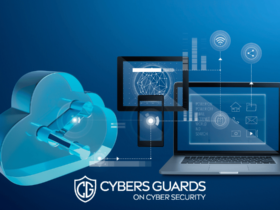For regular users, the era of the large computers that need a whole room to themselves has long passed. In reality, though, it could be said that we have arrived at the brink of the second such era. Personal computers and smartphones continue to become more lightweight, while at the same time, more and more industries rely on the power of huge data centers, equipped with enormous machines. GPU servers used in HPC are a good example here.
What is high-performance computing?
When we look at the historical photographs of the early computing era, some things that are daily bread right now seem unimaginable back then. In 1968, transporting a mere 5MB of data required a special truck and two strong men to carry it, not to mention it is a newsworthy event. Today, it’s simply the weight of a medium-quality photo.
The same goes for computing – even smartphones have now impressive computing powers, even when compared to 10 years ago. But the time of supercomputers has just begun. High-performance computing architecture, or HPC for short, starts breaking free from the universities or government agencies and making its way into business, culture, and everyday life.
These solutions, consisting of custom-built clusters, rely heavily on GPU power. With the magic of the GPU servers, HPC clusters can perform complex calculations and operations in milliseconds, gathering, transforming, and interpreting large batches of big data. For smaller entities, investing in such infrastructure would be impossible. Thankfully, they can reach similar results with the GPU rental units, at the same time controlling the costs, processes, and outcomes.
The GPU servers and big data – are they used to process them?
Discussing big data is one thing that will not go out of style in the near future. Despite the scary-sounding name, big data are actually quite common. Many people use the effects of their processing, even without knowing, and most of us generate vast amounts of such a type of data in real-time.
So, are GPU servers used in processing big data? The answer is yes – it’s also a kind of HPC instance in most cases! In fact, GPU servers are becoming a popular choice for processing big data due to their ability to handle large amounts of data quickly and efficiently. By utilizing GPU servers, businesses and organizations can process big data much faster than they would be able to with traditional CPU servers. On-premise GPU server as well as GPU server rental is able to perform calculations in parallel (parallel processing), which speeds up the handling of data and the operations needed to make use of such a commodity.
Examples of industries that use HPC and GPU servers
One instance where GPU servers are used in processing big data is in the healthcare industry. By its nature, it generates massive amounts of data, including patient records, medical images, and clinical trial data. with the power of HPC, larger healthcare organizations can process this data much faster. This has a direct, beneficial influence on the quality of care the patients receive as well as on the clinical research that helps advance new medical solutions. Some smaller facilities may also make use of these solutions via the cloud providers that lease GPU, which helps to cut the costs of hardware.

Another industry that already uses HPC and will continue to do so in the future is for sure the financial sector. Financial institutions use GPU servers to perform complex calculations and simulations. In this way, they’re able to better manage risk, perform algorithmic trading, manage hedge funds, as well as stay ahead of the massive competition.











FIND US ON SOCIALS